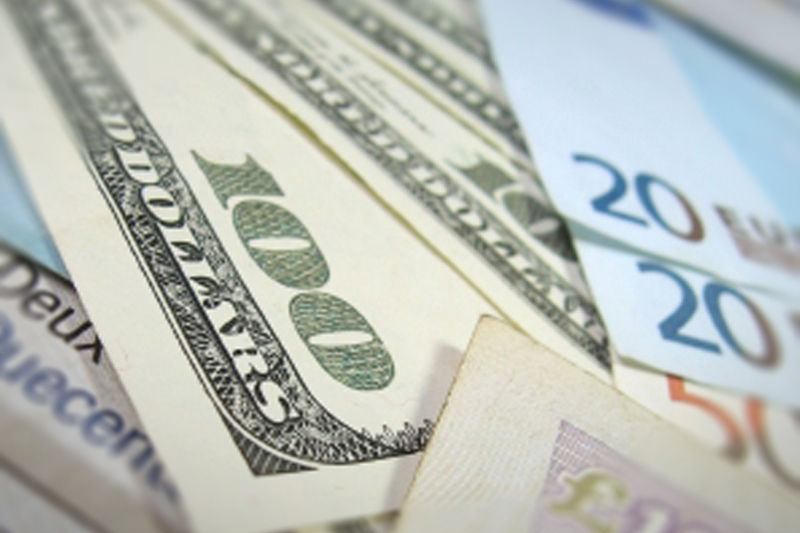Investing.com -- The euro posted mild gains against the dollar on Wednesday, amid a favorable outlook of quantitative easing by the European Central Bank and weak U.S. manufacturing data.
EUR/USD was up 0.0030 or 0.28% to 1.0686 in U.S. afternoon trading to pare earlier losses. The pair dipped to a daily-low of 1.0572 ahead of ECB president Mario Draghi's press conference in European afternoon trading. The euro edged up throughout the session trading flat against the dollar hours later before approaching near 1.07 levels in U.S. afternoon trading.
The pair likely received support at 1.05 its low from Mar. 11 and resistance at 1.10 the high from April 3. Since the start of March, EUR/USD has rarely hovered outside that range.
Draghi appeared confident about the early success of the ECB's 60 billion a month quantitative easing program that launched last month and is scheduled to run through September, 2016. Draghi said the easing initiative has helped spur gradual economic recovery in the area, before adding that the ECB has had no problems meeting its targeted goal of purchasing government bonds. The ECB also left its benchmark interest rate unchanged at 0.05.
The ECB has raised the possibility that it could end the bond buying program sooner than expected if inflation in the euro zone moves toward its targeted goal of 2%. Heading into Wednesday's meeting, Slovenian central banker Bostjan Jazbec indicated that the ECB could slow the pace of easing if it approached its goal of lifting the euro zone out of deflation.
"I am quite surprised at the attention of a possible early exit," Draghi said. "It is like asking yourself after 1K, when are we going to finish the marathon."
For the month of March, the ECB reported that it purchased €52.5 in government bonds, including more than 11 billion from Germany. The purchases also included €8.75 of French bonds, as well as €7.6 billion of government bonds from Italy.
The strong demand from the central bank has pushed a wave of 2-year government bonds into negative territory. Of a sampling of 10 major nations in the euro zone, only 2-year bonds in Italy and Spain remain positive. Yields on 2-year bonds in Germany, Netherlands and Finland have all dipped under -0.2%.
In Germany, yields have turned negative on government bonds heading into 2024. The Germany 10-Year fell 0.03 to 0.11, two days after touching a record-low.
In the U.S., meanwhile, industrial production last month fell 0.6%, after a rise of 0.1% in February. Separately, the Empire State Manufacturing Survey ticked down 1.19 for March producing only the second negative reading in the last 23 months.
The Federal Reserve in its release of its Beige Book on Wednesday blamed the weak manufacturing data on the relative strength of the dollar, a sharp drop in crude oil prices and harsher than normal Winter conditions. The stronger dollar, in particular, was responsible for a reduction in chemical exports in the Dallas region and manufacturing weaknesses in four districts, according to the Fed.
